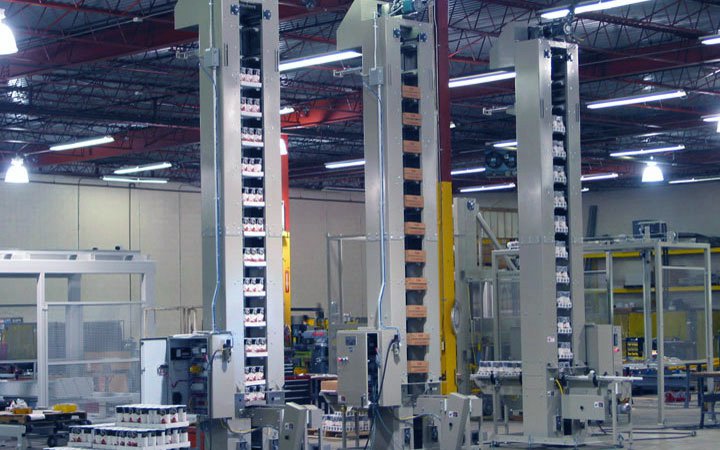
How to Properly Select a Vertical Reciprocating Conveyor
Robert Shenon | 17 June 2020
With skyrocketing warehouse real estate prices in many parts of the country, Bastian Solutions is finding more of our customers want to make better use of their vertical cube. Additionally, with micro/metro distribution centers becoming more prevalent, vertical cube is slowly becoming a necessity. Be that overhead conveyor or equipment platforms/mezzanines, one needs to safely and easily bring the product to the correct height. The most common way to move materials from one elevation to another is through the use of a vertical reciprocating conveyor (VRC). When ordering a new VRC, it’s important to keep a few key details in mind.
- What type of materials are you transporting?
Vertical reciprocating conveyors are a large category, For layman’s terms, there are two main groups: freight lifts or vertical conveyors. While these are not always standardized terms across the industry, I will be using them for simplicity’s sake. Freight lifts (also referred to as “pallet handling” lifts) are going to fit larger products, while vertical conveyors (also referred to as “case handling” lifts) are going to fit cases and boxes.
- Are people going to be transported on these lifts?
Two of the most commonly confused terms are VRCs and elevators. The key difference between these is VRCs cannot transport people while elevators can. However, elevators are roughly twice the cost of VRCs and require additional regulations and safety features. There are rideable material lifts that fit between these classifications, but these can only carry authorized personnel.
- What is the rate of the vertical reciprocating conveyor?
For VRCs, there are two main classifications based on the mechanisms that raise and lower the platform: Mechanical and hydraulic. If you are at a low rate, less than six cases per hour, one can go with a cost-effective hydraulic VRC. If you are at a greater rate (or need greater weight capacity, height, or functionality), you will want to go with a mechanical VRC.
- In what state/region are you installing the VRC?
While this may seem like an obvious question, it is important to keep in mind that each state has its own regulations when it comes to VRCs. Some states (such as California) need special licenses and permits when installing a VRC while others do not have as strict regulations.
- How will the VRC interact with people and equipment?
Even though VRCs can function as standalone hardware, it will interact will personnel and fork trucks in one way or another. Through intelligent use of safety guarding equipment including wire mesh partitions, bollards, and interlocking gates, you can ensure that personnel are safe from VRC operation and VRCs are safe from fork truck operation. it’s also important to keep in mind the infeed and discharge sides (180 degree, 90 degree, 0 degree differences) of the VRC as that will determine the requirements of the design.
If you can answer these five questions with confidence, you should be well on your way to ensuring your vertical reciprocating conveyor fits your facility’s needs. Bastian Solutions, as an independent material handling systems integrator, works with our customers to provide turnkey installation, permitting, and training for all equipment. Working with various VRC manufacturers we provide market competitive pricing while ensuring our customer has the best fit for their operation and business objectives. Additionally, we make sure that any interfacing equipment (mezzanines, conveyors, guarding, etc.) works seamlessly with the selected VRC. If you have questions or need a quote, please don’t hesitate to reach out to a Bastian Solutions engineer.
Robert is a Field Application Engineer for Bastian Solutions in Pomona, California. He has a Bachelor of Science in Electrical Engineering from California Polytechnic State University. As a Field Application Engineer, he works directly with customers to ensure they have the right equipment and processes for their operations. He works with a variety of customers including FabFitFun, Trojan Battery, USPS, and General Electric.
Comments
No comments have been posted to this Blog Post
Leave a Reply
Your email address will not be published.
Comment
Thank you for your comment.